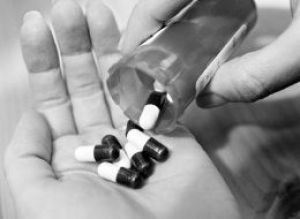
Rehab’s Tough Guy
For the sixth season, Will Smith is keeping Dr. Drew’s patients in line. But his own life story is far wilder than anything you’ve seen on TV.
By McCarton Ackerman
Most people know Will Smith as the imposing resident technician on Celebrity Rehab—a subdued, if firm, presence to balance out the relative hysteria of the women on staff. But for all his seeming serenity, Smith’s former life could put a lot of the former Rehab residents’ better-publicized exploits to shame. A former stuntman who worked with some of Hollywood’s biggest names, Smith’s career suffered a head-on collision when he began using cocaine at the age of 17. He ended up working for a drug cartel for the better part of 20 years, running the South America leg of the business.
Thirty convictions later, Smith found himself in front of a judge facing a 15-year prison stint. When he was sentenced to county jail and mandatory rehab instead, Smith made good on his final chance and has now been sober for well over eight years. Now roughly halfway through the first non-celebrity season of Rehab, Smith spoke to The Fix about growing up a Hollywood kid, nearly killing a woman by accident and his first days of looking for work after prison.
Was it easier to work with a group of people who aren’t celebrities or do the same issues come up?
They all have the same issues. Some of the celebrities on the previous shows were narcissistic or self-entitled because of the level of fame they once had. But more than half of them were completely humbled and knocked to their knees by the disease. And they realized the show was a chance to prove to producers and directors around town that they were doing something to correct their past.
This cast is a very young and diverse group. You don’t find two people with similar backgrounds: there’s everyone from a rapper who grew up around gangs and prostitution to a detective’s son who grew up middle class. We have a guy who was going to go to the Olympics for martial arts and lost everything because of his opiate use in just a couple of years. But these kids hit the lottery when they got the call to appear on the show because they were financially strapped and couldn’t have afforded treatment without this.
I don’t know of any other rehab that puts in more effort than we do. VH1 truly cares about the people who are on this show.
Who are some of your favorite cast members from previous seasons?
Most of the people that came through were a pleasure to work with. Mackenzie Phillips has a heart of gold and it was an honor to meet her. Jennie Ketcham had an incredible amount of self-belief. Brigitte Nielsen was a very classy lady. Jeff Conaway reminded me of my dad [cult 60’s-70’s actor William Smith Sr.]’s friends and had that same show business sense of humor I grew up with. And I would be in awe of some of the big athletes, like Dennis Rodman, that came through.
Especially with the recent deaths of Joey Kovar and Rodney King, many people feel that Celebrity Rehab was exploitative and manipulative towards its cast members. What are your thoughts on that backlash?
It’s not exploitative or manipulative. Obviously the editors picked the best hours of all the footage and of course there are going to be fights or someone pacing in a circle and smoking cigarettes. But there’s nothing that the producers did to instigate controversy.
The other thing people need to realize is that while the treatment the cast members get is a very condensed rehab, I don’t know of any other rehab that puts in more effort than we do. VH1 truly cares about the people who are on this show. It’s not just 21 days of getting their faces out there and then they’re on a plane home. We make sure the cast members don’t have tendencies to harm themselves or others before going on the show and if they do, the network pays for them to get treatment to address that off-camera. Dr. Drew and Dr. Sharp implemented an incredible treatment plan and six-month aftercare plan that VH1 pays for. Sober Living, therapists, whatever they need, VH1 foots the bill. But we can’t control what people choose to do with that opportunity.
Speaking of opportunities, you had a number of them growing up in the entertainment world.
Yes. My father started working in London with Nigel Patrick on Zero One and Asphalt Jungle, and then did a bunch of other shows. He was even offered the role of Tarzan in 1967: they offered him $1 million to do the show for one year in Africa but he turned it down because his agent didn’t want him characterized as Tarzan since it might mean not getting any serious roles. And I’ve done a lot of TV as well and worked as a stuntman for a bunch of movies. When I was 11, I played a young Evil Knievel alongside George Hamilton.
When did you first get into drugs?
I got into a motorcycle accident when I was 17 and while my leg was trying to heal, I did my first line of cocaine. All of my stunt idols and people in the industry were offering it to me. I started drinking heavily shortly after that and was immediately getting into fights at bars. But I’m not blaming the people who gave me drugs for my addiction. If it weren’t for them, I would have found some other way to get a hold of it.
Read more…






